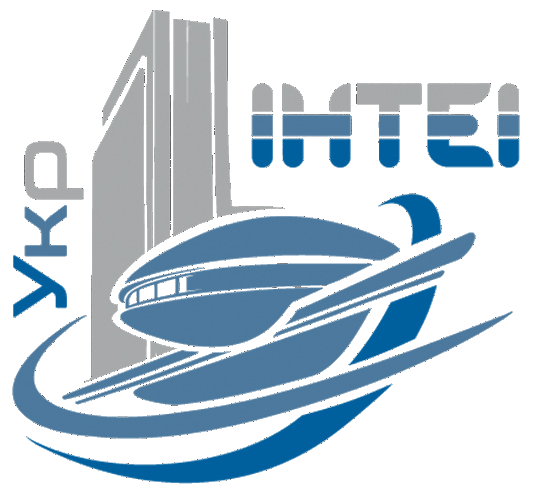How innovative technologies are affecting and changing sports
Igor Rogatskiy, PM and engineering specialist at GlobalLogic, prepared a column for AIN.UA on the combination of sports and technology. How it works now and how it can be.

Sports have always attracted a lot of attention. For example, international competitions such as the Olympic Games or the Football World Cup are necessarily broadcast live on national TV channels and streaming services, and players are actively discussed on the network. Keeping track of your favorite athletes and experiencing stressful moments with them is something we are all so used to.
But until now we cannot watch semi-professional or non-professional teams live in December, because most often they remain behind the scenes of big sports. This is due to the high cost of organizing broadcasts, and because of the complexity of the process and technologies that high-quality data transmission requires. However, already now we see every reason to believe that the situation will radically change in the near future and in the future, broadcasts will become more and more accessible for matches of any level thanks to the introduction of new approaches.
Minimize the impact of quarantine
Automated online streaming technologies are becoming significant with the introduction of coronavirus restrictions around the world, which have triggered the current crisis in sports. Teams did not play matches and did not receive profit from them. Sports broadcasters also lost hundreds of millions of dollars because they were unable to display ads during games. The fans stayed at home and will not return to the stadiums soon. All this increases the need for the automatic high-quality broadcast of the match, and, therefore, for solutions that can provide this. And since they require minimal human intervention, this is very important during the quarantine. Football clubs such as Barcelona, Bayern Munich and Celtic are already considering using an automatic online broadcasting system. In general, back in 2019, it was predicted that fan engagement technologies would have the greatest impact on sports throughout 2020. We see that this is indeed the case, especially with the introduction of quarantine, which also further influenced this trend.
Information is changing the sports industry
In general, we can distinguish two areas of development and use of video content in sports.
The first is the actual broadcast of sports events, which are becoming more and more personalized. For example, how about the ability to switch between cameras and watch the moments of the match that interest you? And all this is not only recorded, but also live. Now this technology is almost not widespread, and is not represented at all in amateur sports.
The second area that is developing much faster is sports analytics. The information that is collected during the game, in particular video recordings, allows coaches and managers to quickly adapt the strategy and set new challenges for the players. Competition now requires more preparation than it used to be, which is making the rivalry more intense in both professional and amateur sports. Each athlete watches the replay of the game and analyzes the points that could be improved. In addition, the team can prepare for upcoming matches, noting the strengths and weaknesses of the enemy.
Technologies are available to everyone
The introduction of the latest technology requires investment, which only big sport basically has. Professional teams can use expensive equipment and hire a large team of specialists, but amateur clubs cannot afford it. However, now more and more systems are emerging that allow online broadcasting at a fairly low cost. The main task of such systems is simple and obvious – to minimize the budget and make the process of broadcasting games as simple as possible in technical and organizational terms, and, therefore, such that it will be available for semi-professional and amateur clubs.
Artificial intelligence cameras
One example of such solutions is the Pixellot system. It consists of a panoramic camera and a computer that controls the shooting mode (panoramic or television). Using artificial intelligence (AI) algorithms, the system analyzes the video stream in real-time, automatically recognizes and tracks objects (for example, on a football or basketball field) and generates the already familiar video broadcast of the game that we are used to seeing on television. And this applies not only to the game in general, but also to the actions of each player individually, including the account of important game moments – goals, assists, interceptions, blocks, fouls, and the like. Now these are just statistics of the game, but in the future it opens up new horizons for analyzing and assessing the prospects of young players. Thanks to analytics, the athlete can see his strengths and weaknesses, track progress.
Personalized content is the most coveted slice in the market. Whether you’re just a spectator, coach or scout looking for talented players, custom content is what everyone wants. Imagine a system, in two clicks it generates all the player’s statistics for a match or for a season, creates highlights (cuts with the most interesting moments) in a second, allows you to upload a video, edit it, share it on social networks, save comments. The viewing process becomes more interactive and interesting – the viewer becomes part of the game.
All this becomes possible also thanks to machine learning (ML). Everything that is titanic efforts and a huge amount of time spent for an ordinary person, AI does in a matter of seconds. Using it, Apple created Siri, Netflix – recommendations in its streaming service, while GlobalLogic engineers, for example, use this technology to develop solutions not only for the sports industry, but also for the medical and automotive sectors. According to a system like Pixellot, it detects and recognizes objects, monitors them, determines the color of commands precisely thanks to machine learning and artificial intelligence. Thus, the boundaries of the field, the roles of the people who are on it are determined (the system clearly understands who is the referee and who is the player) and actions occur, for example, a pass, a goal, a shot, etc.
Future development
In the near future, this technology will only develop and spread. We already see this, especially when about 40,000 online broadcasts of games from 130 sports leagues on 6,000 pitches and stadiums take place every month. So, more and more people are joining watching online broadcasts. This even applies to school competitions. For example, in the city of Jupiter, Florida, a private school installed equipment to broadcast sports games so that they could be watched at home. This is also important when it comes to reducing the number of contacts during the quarantine.
To improve the user experience when watching online broadcasts, integration with OTT media (like Netflix, Megogo, etc.) will be strengthened, which, according to the latest data, are already replacing traditional television. The user will have a whole OTT online platform for his local or amateur club, which is not yet available anywhere. In addition, there can be integrations with sports betting companies, which are a large market.
Also in the future, viewers will be able to watch the game in a more interactive form, for example, using augmented or virtual reality. For example, in the near future, GlobalLogic engineers plan to expand the capabilities of the system and provide each user with the ability to freely choose what to look at: the ball, goal, player or any other object. The developers will also be working on creating a field heatmap to track where the player was most active. The next step is to create an attack map – which side most often the player approached, attacked, and so on. Obviously, all of this is planned to be implemented for most of the team sports.
Therefore, while online streaming is gaining momentum, becoming more widespread and even more familiar to fans, developers are changing the sports industry by improving and expanding the capabilities of the system.
Author: Igor Rogatsky, GlobalLogic
Source: ain.ua










